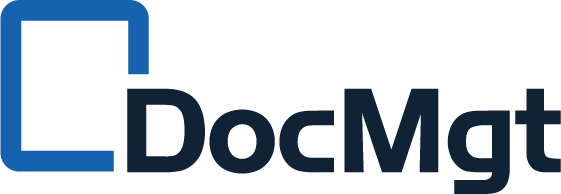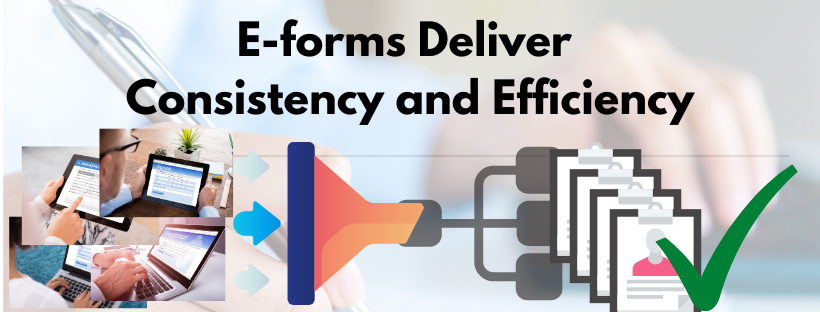e-Forms deliver consistency and efficiency
How do you standardize the way you collect information from both internal and external users? The answer is electronic forms (E-forms). docMgt e-Forms deliver consistency and efficiency to help your organization. Many organizations create Excel or Word forms, store them on shared drives and email them. The forms are returned and reviewed by an individual who makes a decision about what follow up actions to take. This process eliminates the paper form but not much else.
Use E-forms to shorten cycle times, reduce labor and errors, and enforce your processes. docMgt provides an easy-to-use E-form designer which allows non-technical users to design complex forms. More importantly, the E-forms are developed and managed inside the system. This provides better standardization in design and in processing. Combining E-form with the powerful Workflow engine in docMgt gives your forms extra power.
The docMgt workflow processes are data driven so that when E-forms are completed the data from the form determines:
- Where they are stored
- How long they must be retained
- Who needs access to the information
- What other systems need the data
E-forms provide simplicity for the person submitting the form. E-forms enable them to fill the form electronically which means no mailing of forms. This saves them both time and money. They don’t have to directly speak with anyone to start or complete the process. This means they can fill out the form whenever they like. Plus, they can get real-time feedback via an email confirmation. The email lets them know the form was received. Emails can also be sent to update them on the current status of the process.
E-forms also benefit the form creator and users processing the form. For example, the form can require certain fields be completed and can force users’ answers to match certain values. They also provide immediate feedback should an answer conflict with or not meet requirements. This ensures only valid forms reach processing, saving even more time. Form data can also be sent directly to other systems eliminating the need to re-enter the information.
Example Scenarios
Users can access existing E-forms within the system or E-forms can be system generated. A good example is where the system is configured to monitor an employee’s Annual Review date field. When this date is reached the system triggers the creation and routing of an annual review form. When the form is completed it could be automatically routed to their supervisor for review.
External users can be directed to a URL from an email or web link that is sent to them to access a form. A good example of this might be a person who clicks on a link on a website to fill out an employment application. When they click the link it opens the application form, the person then completes it, and if required attaches their resume to it. When submitted, the data from the form is used to create an applicant record for that person. Any documents the user attached are also stored in that record alongside the E-form. The data from the form is then used determine how the form is processed. In this example the “position applied for” field might determine who the application is routed to and how long they have to respond to it. The decisions made by user at this step could spawn other actions like the sending of a rejection email or the prompting to schedule an interview.
Summary
docMgt E-forms provide the consistency, efficiency, security, and compliance most organizations need today. Contact us today to learn how docMgt e-forms can help you meet your automation and governance goals.
Related Links

